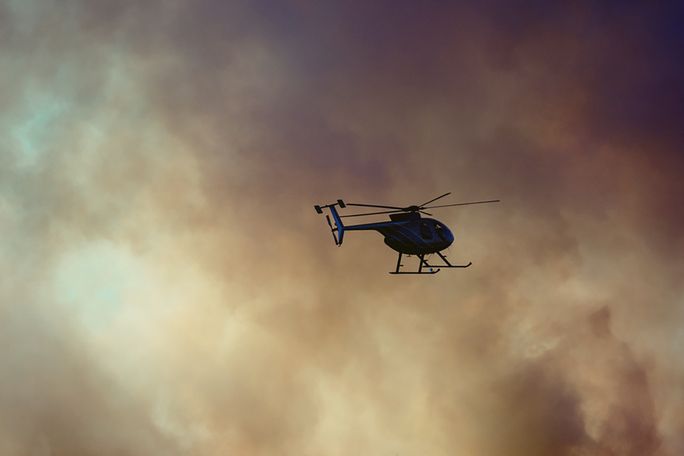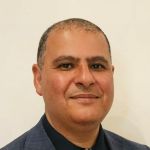The Danger of Spiritual Disorientation
At times trusting our instincts can betray us. When difficult situations arise in our lives, what do we trust to get us through? Ourselves or God?

But on Jan. 26, 2020, at the age of 41, Kobe and his 13-year-old daughter Gianna died in a helicopter crash just outside of Los Angeles, California. The tragic accident also killed seven other people, including the pilot.
The National Transportation Safety Board (NTSB) did a full investigation to determine the cause of the fatal crash. Nearly a year after the crash, the NTSB concluded that the crash was caused by two very avoidable mistakes:
- Pilot error.
The first error attributed to the incident was pilot error. The pilot went against both his training and aviation rules by flying into bad weather—in this case, heavy fog.
The NTSB believes the pilot did so because of “self-induced pressure,” as he was carrying a high-profile passenger. He was trying to get Kobe and his friends to a destination on time, and so the pilot took risks that he likely wouldn’t have taken normally.
- Spatial disorientation.
When pilots are in bad weather where all visibility is lost, they can no longer use their vision to determine their orientation. The vestibular system, the organs of balance in the ears, can give the pilot the feeling of being level when he or she is actually banking and descending, or vice versa. The name of this phenomenon is “spatial disorientation.” The pilot radioed to the control tower that he was about to ascend out of the heavy fog, but instead of ascending, he banked left and descended. This was likely because his senses deceived him, causing him to believe down was up. When he broke out of the heavy fog, it was too late. His helicopter crashed into the hillside, killing all on board.
Let’s look at this phenomenon a little closer.
Spatial disorientation describes pilots’ loss of orientation when their senses deceive them. Jan Stepanek, a physician and expert in aviation spatial disorientation, describes how our senses help us determine direction:
- Our vision is our dominant sense. When we lose all visibility, we are vulnerable to being unable to discern which way is up or down—or even if we are moving or motionless.
- Our neurovestibular system in the inner ear helps us detect movements like acceleration or rolling from side to side. Though the vestibular system is good at sensing significant changes, it has a weakness. It can be very poor at sensing gradual changes.
The combination of losing visual cues and receiving confusing or inaccurate input from our vestibular system causes spatial disorientation. In this state, a pilot’s senses deceive him or her as to the aircraft’s orientation to its surroundings. The pilot can’t visually discern which way is up, down or sideways.
When this occurs, trained pilots must discipline themselves to disregard their senses and fly solely by their airplane’s instruments instead. Pilots must put their full trust in their instruments and ignore what they think they see or feel. This can be extremely difficult for even the most experienced pilot, because our natural inclination is to act on our senses.
What spiritual lessons can we learn from this?
The danger of spiritual disorientation
Just as the pilot’s senses can deceive him or her, our hearts can deceive us. We can become spiritually disoriented.
The Bible teaches us to not trust in ourselves (Proverbs 3:5). Why? Because we are naturally hostile to God’s way (Romans 8:7) and our hearts are “desperately wicked” (Jeremiah 17:9).
How did our hearts get this way? It began in the Garden of Eden. In this garden, God planted two special trees, one called the tree of life and the other called the tree of the knowledge of good and evil (Genesis 2:9). God gave Adam and Eve a very basic instruction: don’t eat of the tree of the knowledge of good and evil (verse 17). These two trees represented two ways of life: obedience leading to eternal life and disobedience leading to death.
Just as the pilot’s senses can deceive him or her, our hearts can deceive us. We can become spiritually disoriented.
But after hearing the deceptive words of the serpent, “the woman saw that the tree was good for food, that it was pleasant to the eyes, and a tree desirable to make one wise, [and] she took of its fruit and ate. She also gave to her husband with her, and he ate” (Genesis 3:6).
Instead of acting on the instructions God had given her, Eve trusted her senses. Even though she knew what God had commanded, she ate it because her eyes deceived her. It looked good to her.
When Adam and Eve ate the forbidden fruit, their eyes became open to Satan and closed to God (verse 7). Instead of trusting in God, most of mankind has continued to live in spiritual blindness and has trusted Satan’s distorted perspective (Revelation 12:9).
Light in a world of darkness
As the pilot lost visibility on that fateful day, he needed to trust his instruments to navigate out of the dangerous fog. This can teach us that we need to trust in God’s Word to navigate us out of the darkness of this world.
The state of disobedience our world is in is described as “darkness” (Isaiah 60:2). Most people living in this dark world don’t know where they are going spiritually (John 12:35). They are spiritually disoriented.
Jesus Christ came into this world as a “great light” that shines in this dark world (Matthew 4:16). He shows us the way out of the darkness (John 8:12). When God calls us, our eyes are spiritually opened (Acts 26:18). Instead of living in darkness, we can become lights to this world (Philippians 2:15; Ephesians 5:8; 1 Peter 2:9).
The psalmist and the apostle Peter describe God’s Word, the Bible, as a light (Psalm 119:105; 2 Peter 1:19). The light of God’s Word can help us navigate through this world—seeing through the darkness and knowing which way is up, down and sideways. When we trust God’s Word for spiritual sight and direction, we will navigate our lives in the right direction.
But how does one individually go against the current of this world?
Trust our instrument—the Bible
When a pilot experiences spatial disorientation, it is not easy for him or her to overcome it. He or she has to learn to be confident in flying by the instruments.
Sadly, the pilot in this fatal crash had little experience in instrument flying. The same is true with many pilots who mostly fly by sight. Flying by sight can be perfectly fine and safe in good conditions, but deadly in bad conditions. Anthony Brickhouse, a former NTSB investigator, described the danger this way: The edge between flying by sight and flying by instruments is often “a deadly event.” This is one of the leading causes of plane crashes. This problem is also believed to be the cause for the fatal crash that killed John F. Kennedy Jr. along with his wife and sister-in-law on July 16, 1999.
A cockpit instrument panel is quite complicated. Instruments show pilots how far they are banking, their flying altitude, if the aircraft is turning, climbing or descending. When pilots are experiencing spatial disorientation, their instruments tell them what is real.
For Christians, the instrument panel of life is the Bible, God’s Word. The Bible tells us what’s true and what’s false—what’s right and what’s wrong. It tells us how we really are and what the world is really like. On the other hand, our senses often give us a distorted view of ourselves and the world.
Jesus taught that we need to trust our instrument, which is “every word that proceeds from the mouth of God” (Matthew 4:4). Just as a pilot needs to study and be trained to trust his or her instruments, we must study the Bible and allow it to guide us in the right direction (2 Timothy 2:15; Acts 17:11).
When we are guided by God and His Word, we will never experience spiritual disorientation!
Date Posted: March 29, 2021

 by Isaac Khalil
by Isaac Khalil

